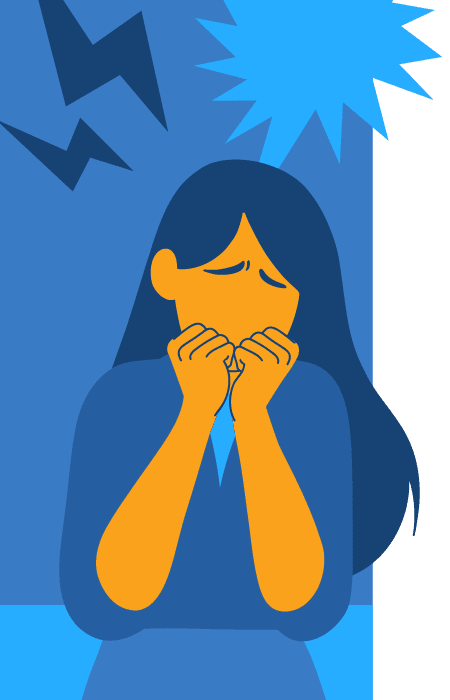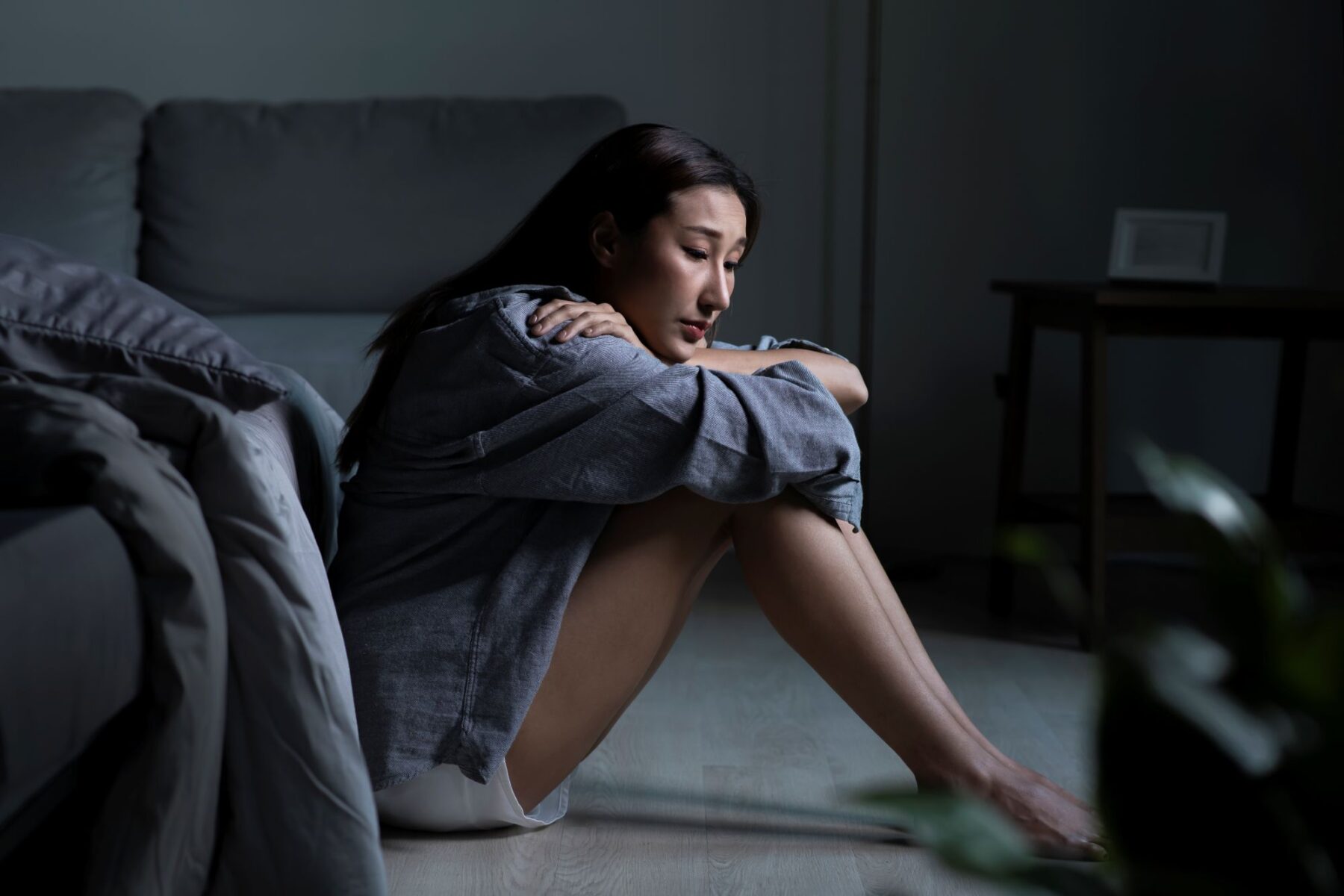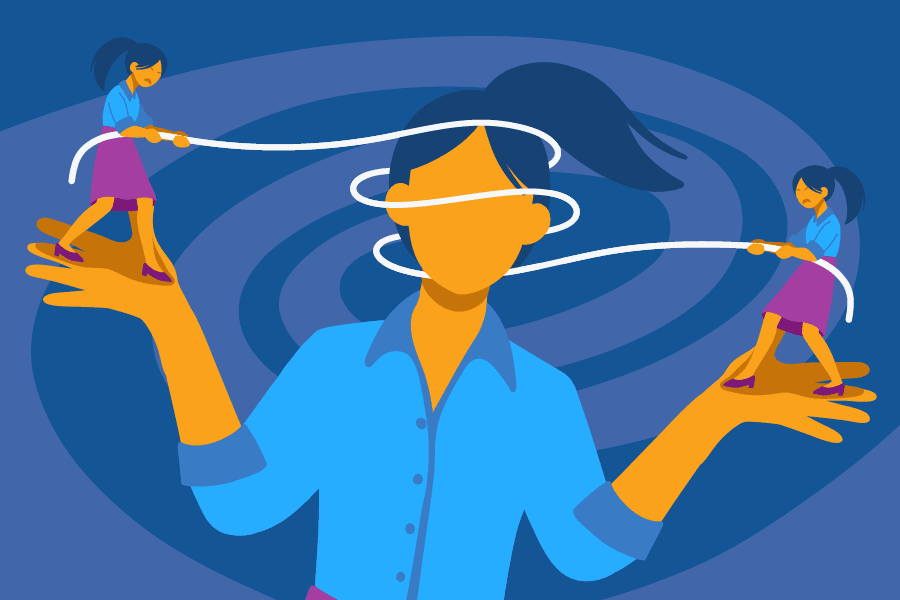Anxiety Disorders & Co-occurring Substance Abuse
Anxiety is a natural and intelligent human response to danger; when threatened the brain reroutes blood flow to the amygdala (the “flight or fight” area of our brain) to keep us on our toes, save our lives, and avoid similar danger in the future. For many modern people, however, that survival programming gets kicked on when it might not be necessary or stays on when not needed, and an anxiety disorder can develop.
What Are Anxiety Disorders?
According to the National Institute of Mental Health, anxiety disorders are the most commonly occurring mental illness in the US; approximately 18% of the adult population (18+) and an astonishing 25% of 13 to 18-year-olds in America struggle with some type of anxiety disorder. Characterized by feelings of worry, distress, and intense rumination, anxiety disorders are intense thought patterns that affect other aspects of life. With many Americans’ busy schedules and high drive to succeed, it isn’t any wonder that anxiety plagues much of the population and comes in many different forms.
Common Anxiety Disorders Include:
- Phobias Intense fears of specific things, places, or situations
- Social Anxiety Fear and difficulty engaging with others or interacting in social circumstances
- Obsessive-compulsive Disorder Uncontrollable thoughts or behaviors that are often repetitive
- Panic Disorder Sudden feelings of terror, which may result in a shortness of breath, chest pain, and inability to think rationally
- Post-traumatic Stress Disorder Often arise in response to a life-threatening or other traumatic experience. May include flashbacks, nightmares, hyper vigilance, and startling easily
- Generalized Anxiety Disorders Characterized by worry, rumination, or fear of the future without rational explanation. This may result in physical symptoms such as upset stomach, insomnia, or headaches
Emotional Symptoms of Anxiety Disorders
- Feelings of apprehension, dread, fear, and panic
- Feeling tense and jumpy
- Restlessness or irritability
- Anticipating the worst and being watchful for signs of danger
Physical Symptoms of Anxiety Disorders
- Pounding or racing heart and shortness of breath
- Upset stomach, frequent urination or diarrhea
- Headaches, fatigue, and shortness of breath
- Sweating, tremors, and twitches
- Nausea and dizziness
- Heart palpitations
- Upset stomach
- Insomnia
These symptoms alone are unpleasant enough, but many people diagnosed with anxiety also struggle with a depression disorder. Like depression, many factors may contribute to the development of anxiety disorders, including traumatic events, environmental stresses, and genetics/brain chemistry. Anxiety often arises as a natural response to a stressful situation, and unless properly diagnosed and treated, some people turn to substances to help manage the symptoms of anxiety.
Depressants and Anxiety
Depressants such as alcohol or prescription benzodiazepines lower the nervous system’s response and help people feel calmer. While this may help the individual in the short term, for example, helping someone with social anxiety attend a get-together, it can often set a person up for future failure. The “flight or fight” part of the brain can be dulled in the moment, but as a result, there may be long-term damage to the natural mechanisms that help relieve the symptoms of anxiety.
This can create a dependence on the substance to function, which in turn often creates more anxiety. (If the substance is expensive, illegal, or prescription, users may find it more and more stressful to obtain the amounts needed to cope.) Some substances, like marijuana, can trigger anxiety or panic attacks, resulting in further trauma and future anxiety.
Anxiety Disorders Co-occurring with Drug or Alcohol Abuse
Dependence can also result in a change in brain chemistry, in particular for teens and young adults, whose still-growing brains are susceptible to programming changes introduced by substances. By leaning on a drug to manage anxiety, young users may be setting themselves up for a lifetime of reward center-driven behavior, and they may miss out on the opportunity to develop healthy coping skills.
Anxiety Disorders & Dual Diagnosis Treatment Options
If you think you or your loved one might be struggling with anxiety, get help. There are many healthy tools and anxiety treatments proven to support the disorder for long-term, sustainable management and healing. What looks like a “troubled teen” may be a young person needing assistance in managing a co-occurring disorder. Sandstone Care specializes in treating teens and young adults with programs in Colorado, Virginia, and Maryland.


Online Treatment Programs
Our virtual IOP program offers the same programming that we offer in person, all online – this is ideal for those who live too far to drive to an addiction center, have transportation issues, or have health concerns that make in-person treatment challenging.






